This is the final installment in a five-part series that follows an Atlantic salmon on its journey upstream to spawn in a tributary of Lake Champlain driven by its instincts (and a pickup truck). Learn why this species disappeared from the lake in the 19th century, and how it is making a comeback today thanks to collaboration by partners in the basin.
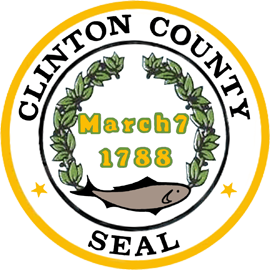
“Clinton County New York has a seal, and there is a fish on that seal,” noted Bill Wellman, a Board Member for the Lake Champlain Chapter of Trout Unlimited. “That fish is a salmon.”
Wellman, whose organization has been instrumental in supporting all aspects of salmon restoration in the basin, explained that two hundred years ago, salmon would have been a logical choice for the emblem of a county that abuts the lake. “They were so prevalent in these rivers that people could just wade into the middle of a stream and catch them with a pitchfork,” he said.
Although native Atlantic salmon disappeared from the lake in the late 1800s, the restoration effort has gradually reintroduced new generations of this species to the streams where its ancestors once spawned, and the communities they once symbolized. The proof is in the parking lots.
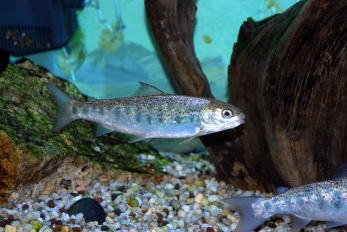
“When salmon are running in the spring and fall, you will see cars with license plates from all over the Eastern United States and Canadian Provinces,” he said. “There is an obvious economic benefit that goes along with this fish.”
In rural communities with relatively little industrial development, it’s a valuable natural asset. Last December, the nonprofit Boquet River Association invited the supervisors and public works superintendents from the five towns that border the river in Essex County New York to meet for an update on the development of a comprehensive management plan for the watershed.
“We went through all of the planning activities, and then I brought up the issue of salmon restoration, and the importance of a fishery to economic development,” said Vic Putnam, the retired planning director for Essex County New York who serves on the association’s Board of Directors.
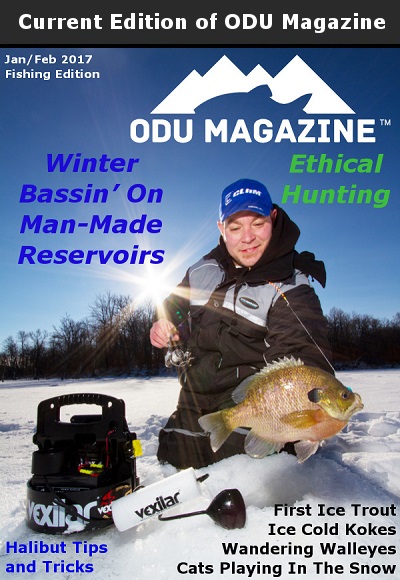 Given that most of those in attendance also happened to be fishermen, Putnam knew salmon would be the perfect bait. “They readily perceived it as a good thing,” he said. “Everyone wants to work together to promote water quality so we can re-establish the salmon fishery.”
Given that most of those in attendance also happened to be fishermen, Putnam knew salmon would be the perfect bait. “They readily perceived it as a good thing,” he said. “Everyone wants to work together to promote water quality so we can re-establish the salmon fishery.”
But Putnam knew the plan would also appeal to them as municipal agents, and members of the community.
“We are really trying to support town needs, whether that’s for flood-zone management, erosion control, riparian restoration, recreation, training employees, sewer and septic upgrades, monitoring and assessment, salt contamination…”
The list went on. It seems communities need a lot of help to address a variety of different issues that can impact both ground and surface water, and salmon are both a motivator and an indicator. They are an effective way to attract anglers, writers, and funding to the Boquet and other tributaries of Lake Champlain, but they are also a way to measure progress in improving the overall health of a watershed that many other species depend upon.
“Salmon have a lot of notoriety, and there is a strong following among fishermen, but I am excited to see how other species respond,” said Putnam. “Certain kinds of minnows, white suckers — they are also tuned into the river environment at specific times of year. It’s about the ecosystem in its entirety, not one fish alone.”

I guess that means this story isn’t really about one fish either. After all, the different partners that have played a vital role in the salmon restoration effort didn’t just come together because of salmon; they came together because they share a geography and a stake in its future.
The final installment in the series was supposed to be about salmon habitat restoration, but it turns out none of the habitat restoration work led by the Service in the Lake Champlain Basin is explicitly focused on salmon. Rather, it’s about sustaining the surrounding landscape and communities.
“We work on projects that have a holistic focus,” said Chris Smith, Supervisory Fish and Wildlife Biologist at the Lake Champlain Fish and Wildlife Conservation Office. “When we do a culvert restoration, a dam removal, or plant trees on a stream bank, it benefits salmon and numerous other native species, but communities also benefit from greater flood resilience.”
Improved flood resilience means less damage associated with flooding, which will amount to significant financial savings for town, state, and federal government agencies. That cost benefit creates important buy-in for work in which every acre counts. “Riparian restoration is one of the tools that you gives you maximum bang for your buck: it addresses bank erosion, overland flow, nutrient inputs, and provides habitat benefits.”
It’s also a great way to involve the community. Smith oversees the Partners for Fish and Wildlife Program in Vermont, which focuses on the restoration of wetlands, woodlands, and riparian areas through voluntary actions by private landowners, watershed organizations, and non-profits. “It’s hard to engage the public in a hands-on way for a dam removal or culvert replacement,” he said. “We can’t have the public run heavy equipment, but we can have them plant trees.”
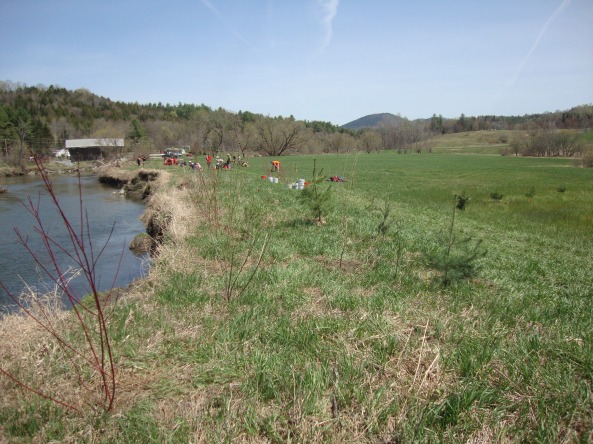
Can they ever. The nonprofit group Friends of the Winooski plants about 1,500 to 2,000 trees every year in efforts to benefit the Winooski River watershed, many of which are done in partnership with FWS. Project manager Shawn White gave an example a project completed recently in the headwaters of the Winooski in Cabot, Vt. “We identified a property with no buffer at all, that turned out to be a hayfield, so we reached out to the landowner and he decided he could spare some land that didn’t have to be hayed,” she said. “It turned into a three-acre restoration.”
Partners Program staff member Katie Kain, a Fish and Wildlife Biologist for the Service, emphasized that in Vermont, a small state with a rich agricultural heritage, agricultural producers are key partners in conservation.
“We do a lot of our work with farming communities through USDA programs where farmers voluntarily agree to give up their riparian areas for habitat restoration in exchange for annual rental payments,” she said, adding, “Just getting one farm in the area to come around to looking at their land management from a different perspective makes a difference.”
Kain pointed to a project completed last year in partnership with the Vermont Land Trust, the Vermont Agency of Agriculture, and the USDA Farm Service Agency to convert seven acres of farmland along the banks of the lower Winooski River into a forested riparian buffer.
“Because there are dams upstream, the Winooski in this section is what you would call a ‘hungry river’: It’s starved for sediment, it’s starved for wood inputs, so there is not much going on for habitat right now,” she explained. Over time, having trees back on the river bank will provide both shading, and a source of insects and woody debris that offer in-stream habitat benefits for salmon.
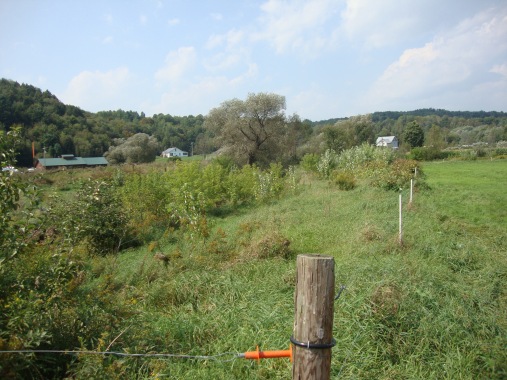
In terms of water quality benefits for wildlife and people, she said, “We’ve already reduced the agricultural runoff into the river by convincing one farm that had been applying manure right up to the riverbank to step back.”
Riparian restoration helps reduce the non-point source inputs of phosphorus and sediments into the lake and its tributaries, which is particularly important in Vermont. The U.S. Environmental Protection Agency recently released new phosphorus pollution limits for Lake Champlain by establishing Total Maximum Daily Loads for twelve Vermont segments of Lake Champlain.
Conservation partners including the U.S. Fish and Wildlife Service, USDA’s Farm Service Agency and Natural Resources Conservation Service, Vermont Agency of Agriculture, Vermont Department of Environmental Conservation, The Nature Conservancy, the Intervale Center, and Lake Champlain Basin Program, are working together to identify places and approaches that are both a priority for reducing phosphorus inputs and for enhancing fish and wildlife habitat while supporting farms and sustainable agriculture. Not just to benefit Atlantic salmon, but also Eastern brook trout, Monarch butterfly, migratory birds, Indiana bat, wood turtle, and more.
It’s clear the partnership is thinking about the big picture, but I admit I’m still thinking about my salmon. When I visited the Boquet River last fall, Senior Fish Scientist for the Service’s Lake Champlain Fish and Wildlife Conservation Office Bill Ardren told me, “A lot of things need to be right for salmon to have a full life cycle.”
And every week, I heard from different partners who are working to address historic wrongs in an effort to give this species a second chance in the basin, through dam removal, tactical control of a parasitic species, managing around an invasive species, refining hatchery production, dispensing vitamins, and of course, instituting a public transportation system for salmon, like mine, who need a lift.
To be sure, there is more work to be done, and more partners to enlist. For example, a budding effort by the Service and partners to assess potential spawning and rearing habitat in the watershed through a combination of habitat stream surveys and models that predict which tributary watersheds and stream reaches have the right characteristics for rearing and spawning. Characteristics like gravel size, water depth, velocity, and temperature.
But while the prospects for my salmon remain uncertain (at least at the time of publication) the outlook for the species seems increasingly clear.
“Dam removal, sea lamprey control, habitat restoration — all of that is now in place,” said Ardren. “We are getting big salmon back, they are digging their nests, they are providing a fishery again, and providing a connection for people in the local communities to return to the rivers.”
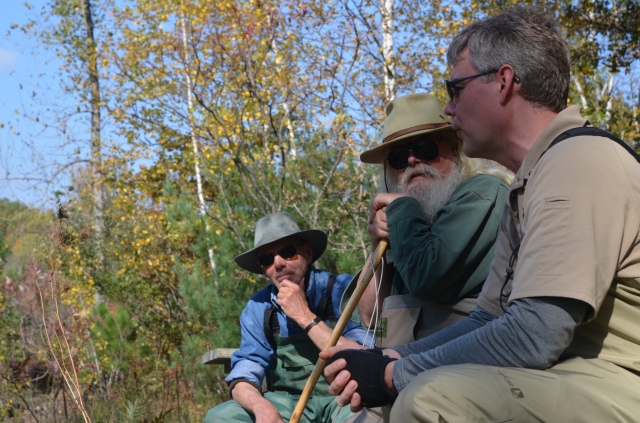
Senior Fish Scientist Bill Ardren from the Lake Champlain Fish and Wildlife Conservation Office talks with local fishermen on the banks of the Boquet River in Willsboro, N.Y. Credit: Nancy Milliken
After all, the recovery of salmon signifies more than just a comeback for fish. “These fish helped sustain the people who settled this valley,” said Putnam. “They are part of our history.”
And the reestablishment of the salmon population in the lake is itself history in the making.
In the book Lake Champlain: A Natural History, naturalist Mike Winslow observed, “The lake does not reflect today’s actions so much as yesterday’s.” If tomorrow’s lake reflects the actions partners are taking today, I have a feeling there will be plenty of salmon swimming beneath the surface.
